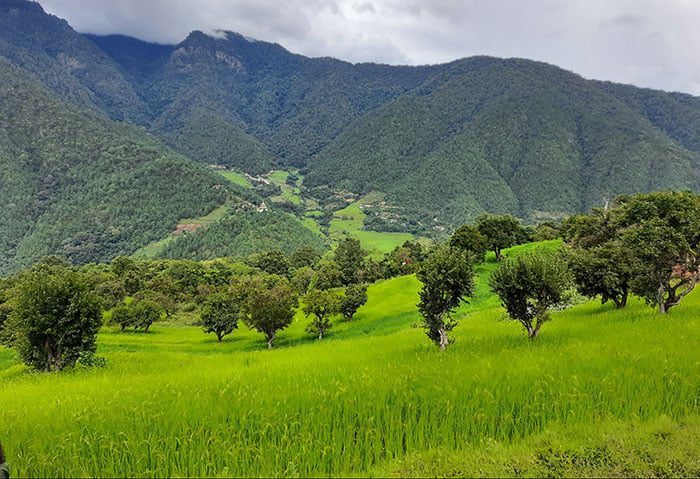The Bhutan Media Foundation, one of 14 media grantees from year three of our Asia-Pacific project, has been providing grants and support for a series of stories looking at how climate change is impacting this small Buddhist kingdom on the eastern edge of the Himalayas. The in-depth reports look at everything from how traditional farming and herding practices have been altered by climate change to the dangers of glacial collapse and flash flooding.
Under this project, selected journalists go to remote parts of Bhutan and bring back stories from the field. They then link those stories with policies formulated by the government. After those series of stories are complete and published, the Bhutan Media Foundation will hold a workshop where journalists, experts and policymakers can discuss the issues raised in the reporting.
Bhutan’s economic development mostly depends on agriculture, forests and hydropower – all sectors highly sensitive to climate change. The goal for this type of in-depth coverage is to bring the challenges facing the environment to the attention of policymakers. The one-and-half year project is now in the final phase, with journalists currently working on their second set of stories focused on policies.
Here are a few from the first round:
- “The Lost Mandarin Growers of Bhutan” by Sonam Penjor looks at the decline in mandarin yields and the impact the once-reliable cash crop is having on farmers who are struggling to adapt. Some have shifted to cardamom, mango and avocado production, but those crops have also been dying. And mandarin trees are now growing at much higher altitudes than the places where they once thrived.
- Reporter Choki Wangmo looks at the benefits provided by pangtse shing, a deciduous tree found in Bhutan that grows naturally on barren, salty and severely arid soil and has proven instrumental in helping mitigate the impacts of climate change, by preventing soil erosion and landslides, for example. The species is now under threat from deforestation, but a scheme to more efficiently harvest oil from its seeds could help with conservation and bring additional income into farming communities.
- Even before a glacial collapse sparked intense flooding that swept away two dam projects in Uttarakhand, India, earlier this year, freelance reporter Karma Wangdi wrote about a warning from glaciologists in Bhutan that a glacial lake outburst flood could spell disaster for communities living downstream in places like the Phochhu Valley. And journalist Sonam Lhendup looks at how low-lying areas in Bhutan face twin risks from glacial lake outburst flooding and the collapse of artificial dams formed by landslides.
- For hundreds of years, the nomadic yak herders of Haa moved between the high-altitude alpine grasslands of Bhutan and Tibet. Today, the domestic yak and the indigenous herders are facing an uncertain future. But a highland development program could offer a potential solution, writes reporter Phub Dem.
- This story out of Yakpugang by Tashi Phuntsho looks at how a program to pay community forest members to protect the forest from excessive grazing and over-harvesting is helping conserve water resources.
And from the Bhutan Broadcasting Service come two reports: “Trading White Gold,” which explores how communities are engaged in “water trading” to divide a prized commodity equally among all as water sources continue drying up; and “A Fungus, a Community and Its Culture,” a documentary about how Cordyceps, a prized fungus, is helping enhance the lives of Bhutan’s highland communities.
(Banner photo: Pangtse Shing has been instrumental in mitigating climate change impacts in Kabesa. Courtesy of Kuensel)
